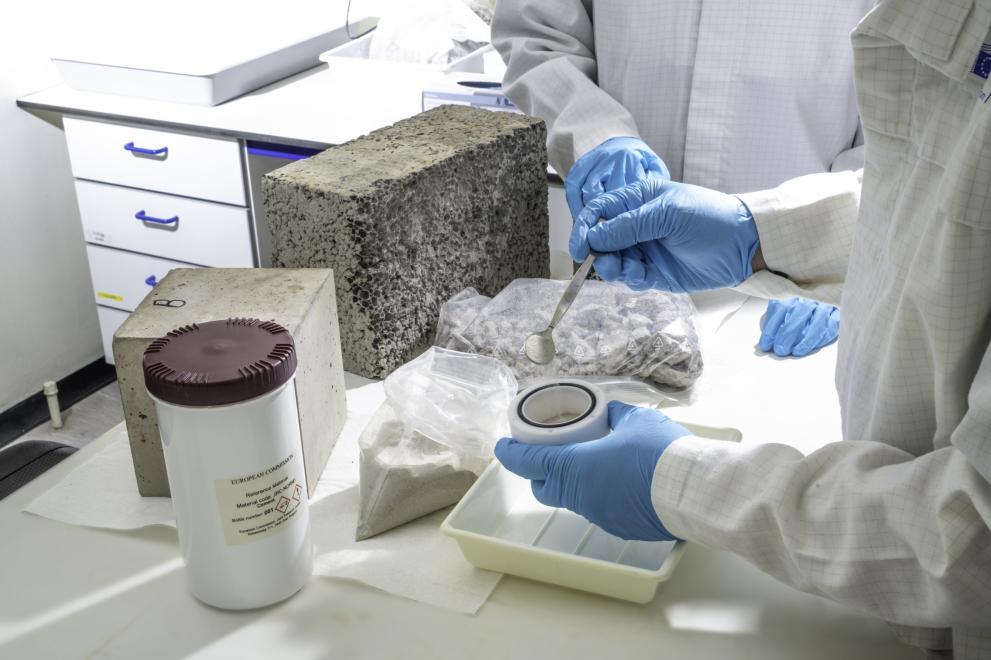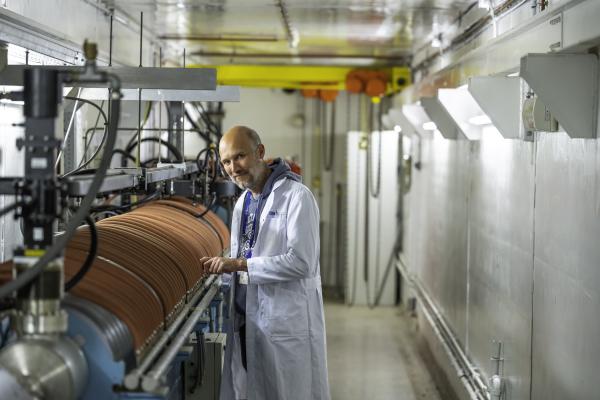
Construction products may contain minerals with elevated levels of natural radioactivity, which may expose people to radiation.
New research by the European Commission’s Joint Research Centre validated the trueness and precision of the future reference method used to establish the natural radioactivity levels of the radionuclides radium-226, thorium-232 and potassium-40 in construction products.
This forms part of the mandatory conformity marking (CE marking). In future, manufacturers must use the reference method for the CE marking when declaring how much radiation their product emits.
A validated method for determining the activity levels allows designers and architects to consider and compare the natural radioactivity in construction products, and so protect people from the effects of long-term exposure to elevated natural radioactivity.
The CE marking also ensures that the product can be traded throughout the EU single market without restrictions.
Natural radioactivity in construction products
The construction minerals sector is the largest non-energy extractive industry in the EU, with the highest tonnage of extracted minerals, the greatest number of companies and employees, and the largest turnover.
EU-wide Basic Safety Standards Directive requires all EU countries to ensure that the activity concentrations of radium-226, thorium-232 and potassium-40 in construction products which be of concern from a radiation protection point of view, are determined and the resulting radiation exposure assessed before they are placed on the market.
The reference method, newly validated by JRC scientists, ensures all manufacturers take a consistent approach. The method uses semiconductor gamma-ray spectrometry to determine the activity concentrations (massic activity, expressed in Bq/kg) of radium-226, thorium-232 and potassium-40.
To validate the precision (repeatability and reproducibility) of the method, JRC scientists selected, screened and prepared six materials from construction products: cement, plaster, milled concrete, aggregates and expanded clay blocks, in pieces and in milled form. As part of the screening, the JRC determined the reference values of the massic activity of radium-226, thorium-232 and potassium-40 in the six materials, enabling it to assess the trueness and precision of the method.
Robust standards, safer buildings
By considering the natural radioactivity in construction products, architects can optimise the design of buildings and reduce the radiation exposure from the radioactivity in these products.
In addition to the natural activity in the construction products, the calculation of dose takes into account the density and thickness of the material. The harmonised method for calculating the radiation dose, combined with the reference method for the activity concentration, makes it possible to select and combine materials (including recycled ones) in an optimal way.
The obligatory declaration of performance which allows construction works to be designed and built in such a way that they will, throughout their lifecycle, not be a threat to the health of workers, occupants or neighbours because of emissions of dangerous radiation.
The validation by the JRC helps ensure that the reference level of 1 mSv per year for indoor external exposure to gamma radiation emitted by building materials, as specified in the Basic Safety Standards, is not exceeded.
Towards a European standard
The European Committee of Standardisation will discuss the results of the validation with a view to updating the draft European standard EN 17216. After its publication as a fully validated EN standard, the method can be used as the reference method in harmonised European standards for construction products. Based on these product standards, manufacturers and distributors of construction products can declare the natural radioactivity in their products.
Details
- Publication date
- 22 March 2024
- Author
- Joint Research Centre



